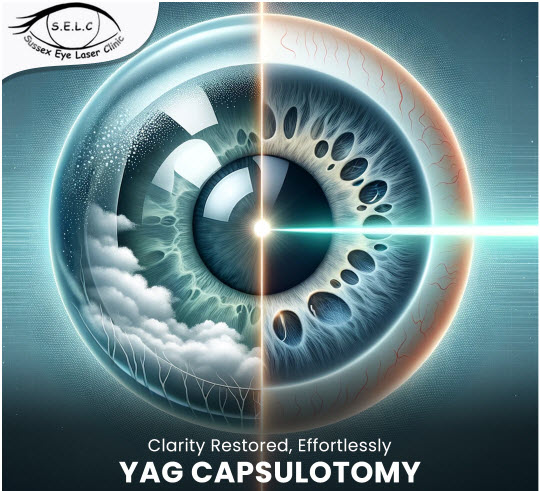In the realm of eye health, the development of cataracts is a common hurdle. As the natural lens clouds over time, individuals often resort to cataract surgery, a transformative procedure where the cloudy lens is replaced with an artificial one. This article delves into a crucial aspect of post-cataract surgery – YAG capsulotomy.
Understanding YAG Capsulotomy
What is YAG Capsulotomy?
YAG capsulotomy, also recognized as YAG laser treatment, constitutes a specialized procedure designed to rectify Posterior Capsule Opacification (PCO). PCO can manifest subsequent to cataract surgery, resulting in the thickening of the posterior lens capsule on which the artificial lens is placed. This thickening emanates from the migration, proliferation, and differentiation of lens epithelial cells (LECs).
Deciphering the Need for YAG Surgery
How to Determine the Necessity for YAG laser capsulotomy procedure?
PCO stands as the most prevalent postoperative complication, potentially manifesting months to years following cataract surgery. Recognizing the signs becomes imperative for timely intervention. Patients developing PCO may exhibit symptoms such as:
- Blurred or cloudy vision in one or both eyes
- Decreased vision
- Light sensitivity
- Reading difficulties
- Impaired contrast
- Glare or halos around lights, with bright lighting causing discomfort
Discerning these symptoms becomes pivotal in distinguishing PCO from cataract recurrence, ensuring the application of appropriate treatment.

The YAG Capsulotomy Treatment Process
Operation of YAG Capsulotomy Treatment
YAG capsulotomy utilizes a sophisticated laser to eliminate the thickened capsule, facilitating unimpeded passage for light to reach the posterior of the eye. This precise treatment, lasting only a few minutes, offers the advantage of being non-invasive, involving no surgical incisions.
Execution of YAG Laser Capsulotomy
Preceding the initiation of YAG laser treatment, a comprehensive evaluation of vision and intraocular pressure is conducted. Following this, eye drops are administered to dilate the pupils and numb the eyes.
Once the eye drops take effect, the YAG laser commences its procedure. With the head comfortably positioned, the laser creates a small aperture in the middle of the capsule. This opening facilitates the transmission of light through the artificial lens to the posterior of the eye. The entire process is brief, typically spanning around 5 minutes, and is virtually painless.
Post-treatment, there may be a momentary dazzle from the laser, with vision gradually returning over 5 to 10 minutes. Anticipate some blurriness for a few hours due to dilating drops; however, with YAG laser treatment, recovery is nearly immediate.
Conclusion
In the pursuit of enhanced vision clarity, YAG capsulotomy emerges as a swift and efficacious solution for addressing Posterior Capsule Opacification. Acquiring an understanding of the symptoms and the treatment process ensures timely and well-informed decisions for individuals navigating complications post-cataract surgery.
Frequently Asked Questions – YAG Capsulotomy
Is YAG capsulotomy painful?
No, YAG capsulotomy is a minimally invasive procedure and is generally painless.
How soon after cataract surgery can PCO develop?
PCO can develop within months to years after cataract surgery.
Is YAG capsulotomy the only solution for PCO?
While YAG capsulotomy is a common and effective solution, your eye surgeon will determine the most suitable course of action based on individual cases.
Can PCO be prevented altogether?
While there is no full proof prevention, regular eye check-ups post-cataract surgery can aid in early detection and management of PCO.
Are there any long-term side effects of YAG capsulotomy?
YAG capsulotomy is generally safe, with minimal long-term side effects reported. Your eye surgeon will discuss any potential risks based on your specific situation.
